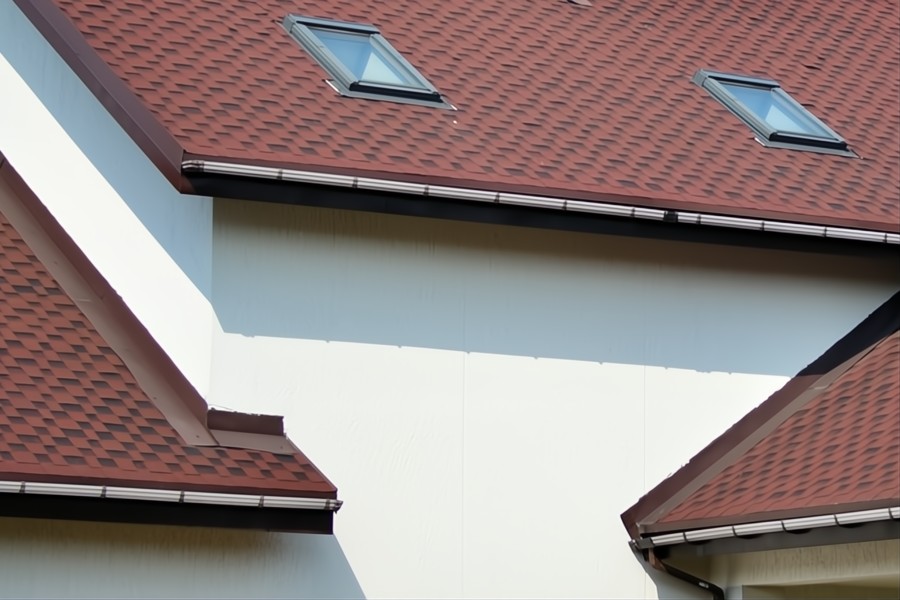
Your roof is one of the most critical components of your home, providing protection from the elements and contributing to your house’s structural integrity.
Regular roof checks can help you identify potential issues before they escalate into costly repairs. In this guide, we’ll walk you through the steps to inspect your roof effectively.
Why Regular Roof Inspections Are Crucial
Regular roof inspections are necessary for maintaining the longevity of your roof and ensuring it performs its essential protective functions. Small issues like a missing shingle or minor leak can escalate into significant problems if not addressed promptly. Regular checks can help spot these issues early, saving you time and money in the long run. Additionally, routine inspections can help you plan and budget for future repairs and potential roof replacements.
When Should You Inspect Your Roof?
The best times to inspect your roof are during the spring and fall. These seasons provide moderate weather, making it safer and more comfortable to perform the inspection. Additionally, seasonal checks allow you to address any damage caused by winter storms or summer heat before they worsen.
However, you should also inspect your roof after severe weather events, such as hurricanes, heavy rains, or snowstorms. Such conditions can cause immediate damage that needs urgent attention.
Safety First: Preparing for Your Inspection
Before you start your roof inspection, ensure you have the proper safety equipment. Here’s a checklist to get you started:
- Ladder: A sturdy ladder that extends at least 3 feet above the roof line.
- Safety harness: If you’re planning to walk on a steep roof, invest in a good safety harness.
- Non-slip shoes: Wear shoes with a good grip to prevent slipping.
- Gloves and protective eyewear: These will protect your hands and eyes from debris.
If you’re not comfortable performing the inspection yourself, consider hiring a professional to do it for you.
Step-by-Step Guide to Inspecting Your Roof
1. Start from the Ground
Begin your inspection from the ground using binoculars. Walk around your house and look for:
- Missing or damaged shingles
- Sagging areas of the roof
- Moss, mold, or algae growth
- Piles of granules (a sign of deteriorating shingles)
2. Check the Gutters
Clogged or damaged gutters can cause water to back up and damage your roof. Look for:
- Debris build-up
- Rust spots or holes
- Detached or sagging sections
- Signs of water damage on the fascia boards
3. Inspect the Shingles
Once you’re up on the roof, closely examine the shingles. Look for:
- Cracked, curling, or blistering shingles
- Missing shingles
- Loose or broken shingles
- Shingle granules in the gutters
4. Examine the Flashing
Flashing is crucial for preventing water penetration around chimneys, skylights, and vents. Check for:
- Rust or corrosion
- Cracks or holes
- Loose or missing flashing
- Signs of water damage around the flashing
5. Look for Signs of Water Damage
Inspect the interior of your home, especially the attic, for signs of water damage, such as:
- Stains on the ceiling or walls
- Mold or mildew
- Damp or wet insulation
- Soft or sagging spots on the roof decking
6. Check for Ventilation Issues
Proper roof ventilation is essential for maintaining a healthy roof structure. Look for:
- Blocked vents
- Rusted or broken vent covers
- Condensation in the attic
- Signs of mold or mildew in the attic
7. Assess the Roof Structure
The overall structure of your roof should be checked for stability. Look for:
- Sagging or uneven areas
- Signs of rotting wood
- Pests, such as termites or rodents
- Damage to the soffit or fascia boards
Get Roofing Inspection
While DIY inspections are essential, nothing beats the expertise of a professional roofing contractor. Scheduling a professional inspection can provide a more comprehensive assessment of your roof’s condition. The importance of a San Diego roofing inspection cannot be overstated, especially given the region’s unique weather patterns and environmental factors. Professional inspectors have the tools and knowledge to identify hidden issues that might not be visible during a DIY check. They can also provide an accurate estimate of the remaining lifespan of your roof and recommend necessary repairs or replacements.
What to Do If You Find Damage
If you discover any damage during your inspection, it’s crucial to address it promptly. Here are some steps you can take:
Minor Repairs
Replace damaged shingles: If you find a few damaged or missing shingles, replace them immediately to prevent water damage.
- Seal cracks and holes: Use roofing cement or sealant to fix small cracks and holes in your roof or flashing.
- Clean the gutters: Remove debris from the gutters and repair any damaged sections to ensure proper water drainage.
Major Repairs
For significant damage, such as extensive water damage, large areas of missing shingles, or structural issues, it’s best to contact a professional roofing contractor. They can provide a detailed assessment and recommend the best course of action, whether it’s a repair or a complete roof replacement.
How to Choose a Professional Roofing Contractor
Choosing the right roofing contractor is crucial for ensuring quality repairs and installations. Here are some tips for finding a reputable contractor:
- Research and reviews: Look for contractors with positive reviews and testimonials from previous clients.
- Licensing and insurance: Ensure the contractor is licensed and insured to work in your area.
- Experience and expertise: Choose a contractor with extensive experience and expertise in the type of roofing material used on your home.
- Written estimates: Obtain written estimates from multiple contractors to compare pricing and services.
- Warranty and guarantees: Ask about warranties and guarantees on the workmanship and materials used.
Preventative Maintenance Tips
Regular maintenance can extend the lifespan of your roof and prevent costly repairs. Here are some preventative maintenance tips:
- Clean the gutters: Regularly clean the gutters to prevent water damage and ensure proper drainage.
- Trim overhanging branches: Trim back any branches that hang over your roof to prevent damage from falling limbs and debris.
- Remove debris: Keep your roof free of leaves, twigs, and other debris that can trap moisture and cause damage.
- Inspect after storms: Check your roof for damage after severe weather events and make any necessary repairs promptly.
- Seal and paint: Apply a sealant or paint to protect your roof from the elements and extend its lifespan.
Regular roof inspections are essential for maintaining the integrity of your home and preventing costly repairs. By following this guide, you can effectively check your roof for damage and identify potential issues before they become major problems. Remember, while DIY inspections are helpful, scheduling professional inspections can provide a more comprehensive assessment and ensure your roof remains in top condition.
Become a Harlem Insider!
By submitting this form, you are consenting to receive marketing emails from: . You can revoke your consent to receive emails at any time by using the SafeUnsubscribe® link, found at the bottom of every email. Emails are serviced by Constant Contact








